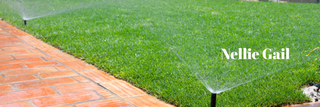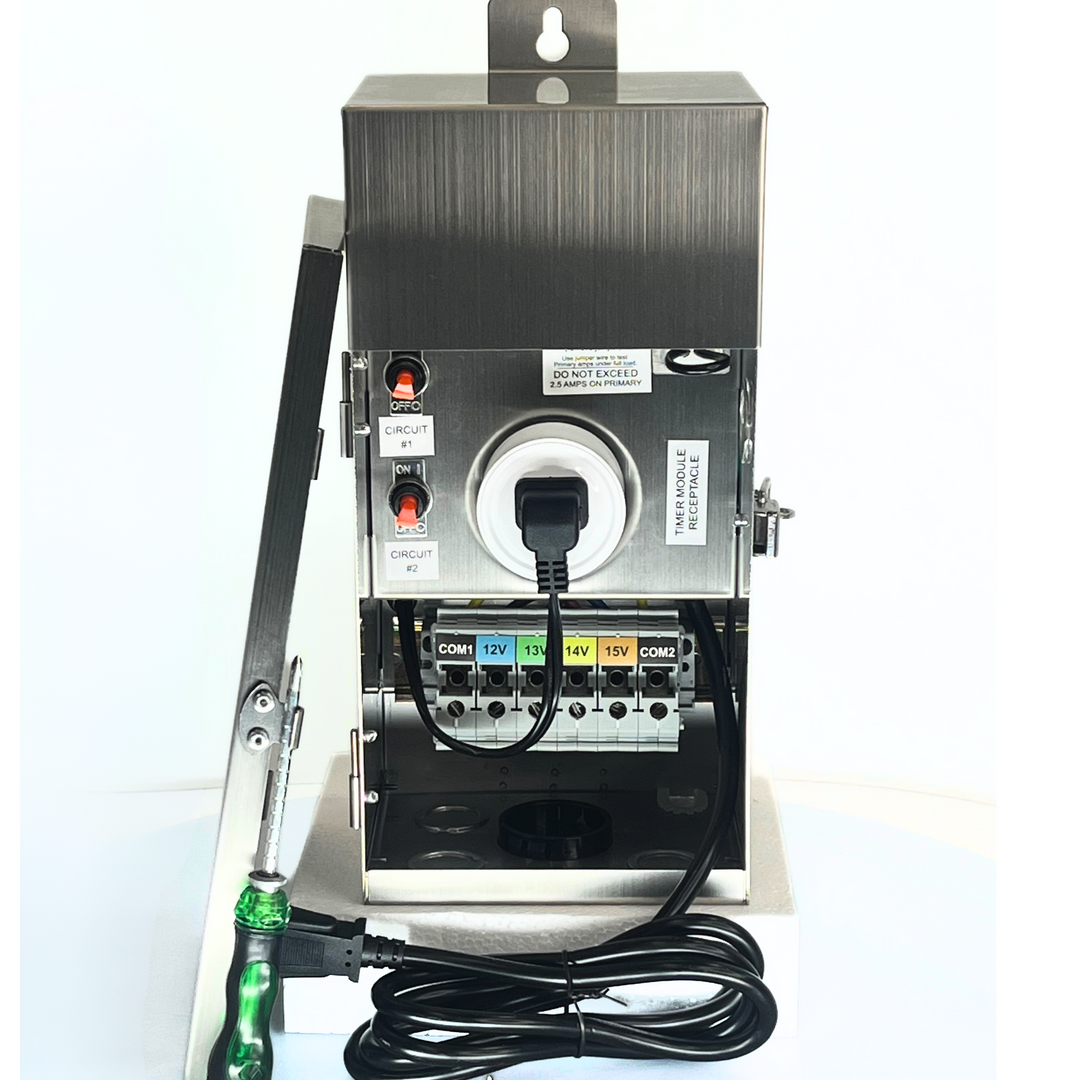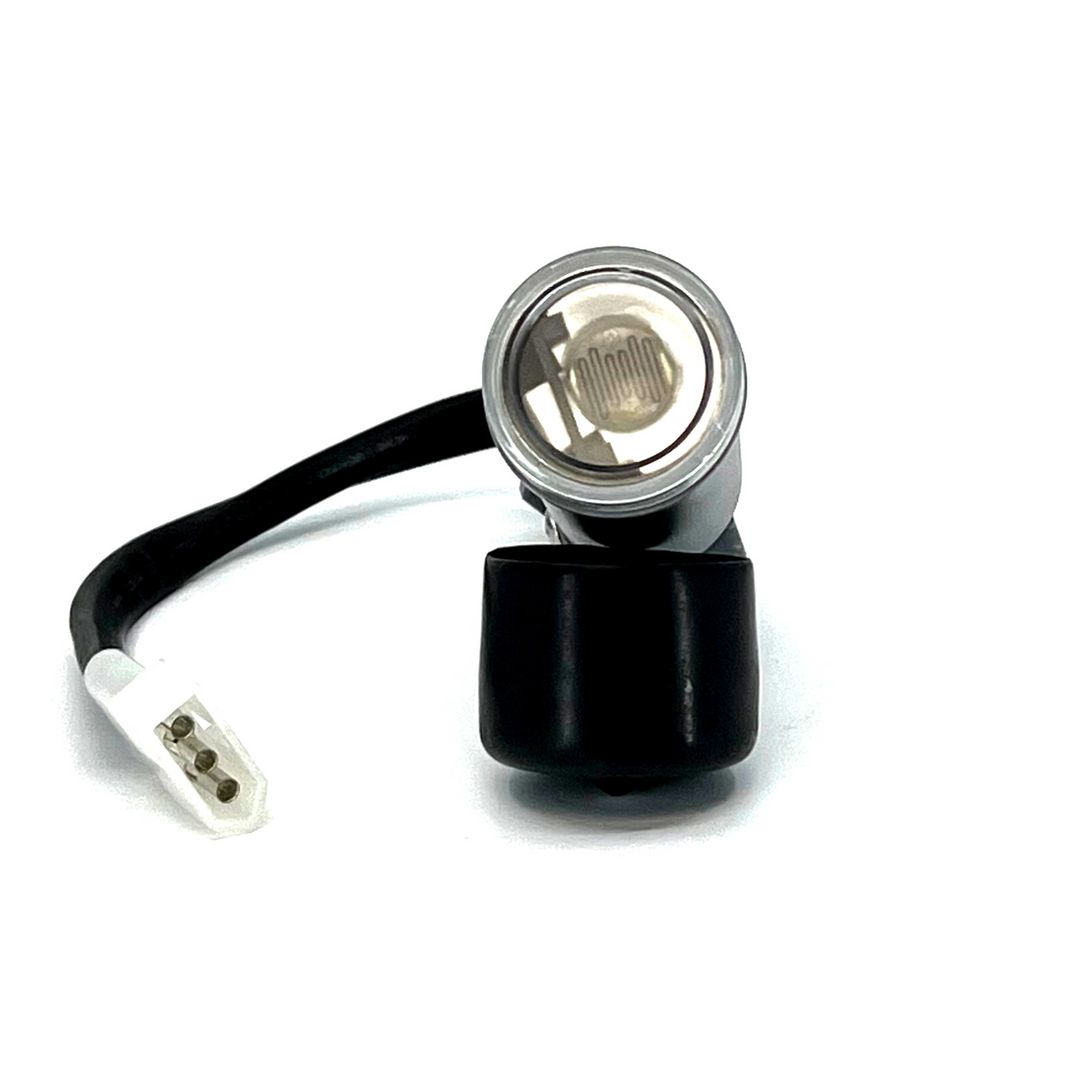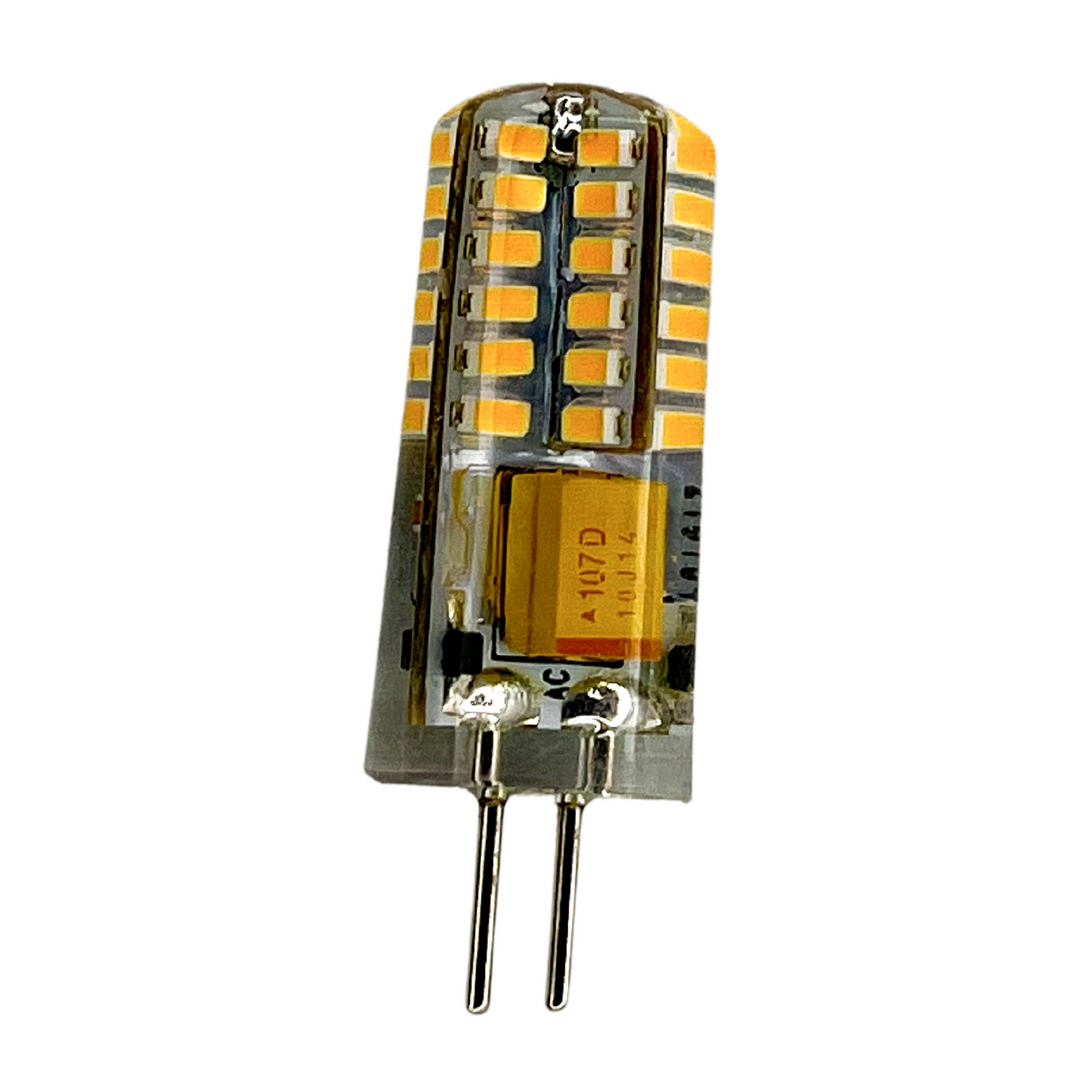
The Quick Fix: Fast Solutions for Sprinkler System Problems
|
|
Time to read 8 min
Maintaining a lush, healthy lawn is a point of pride for many homeowners. A well-functioning sprinkler system is key to achieving this, providing consistent, adequate hydration to your garden. However, when these systems falter, the effects can be immediately visible and detrimental. Addressing sprinkler issues promptly not only saves water but also preserves the beauty and health of your lawn. This comprehensive guide walks you through identifying, troubleshooting, and resolving common sprinkler system problems, ensuring your garden remains a verdant oasis.
Fix Your Sprinkler System: Recognizing the System's Problems
Signs of Malfunction
The first step in solving a sprinkler system issue is recognizing there is one. Signs include uneven watering patterns, where parts of your lawn may be blooming while others wither; sputtering sprinkler heads, which could be clogged or damaged; and continuous water flow, indicating a potential valve failure. Being alert to these signs helps in early diagnosis and prevention of larger issues. Regular inspections can help you spot these issues early, making it easier to maintain an efficient system.
Diagnosing Leaks
Leaks in a sprinkler system can lead to significant water waste and lawn damage. They manifest as soggy patches, eroded soil, or unexpectedly high water bills. To pinpoint a leak, inspect for visible damage along the system and consider using specialized tools like a soil probe or a pressure gauge. Understanding the layout of your sprinkler system can be immensely helpful in this process. Additionally, periodic checks during different seasons can prevent leak-related problems before they escalate.
Troubleshooting and Repairs
Step-by-Step Troubleshooting Guide
Effective troubleshooting involves a systematic approach:
Controller Inspection: Check if the controller is correctly programmed and receiving power. Issues here can often be resolved with a simple reset or battery change.
Sprinkler Head Examination: Look for signs of clogging, misalignment, or physical damage to each head. Cleaning or replacing heads can drastically improve system efficiency.
Valve Check: Inspect the valves for leaks or failure to close, as these are critical for controlling water flow. Sometimes, debris in the valve box can hinder proper functioning and should be cleaned regularly.
DIY Repair Tips
Many sprinkler system issues can be resolved without professional help. Here's how:
Sprinkler Head Replacement: Choose the right type for your lawn's needs and replace damaged heads. This not only fixes immediate problems but can also upgrade your system's performance.
Adjusting Spray Patterns: Ensure each head covers the intended area efficiently. This can prevent overwatering and dry spots.
Fixing Minor Leaks: Identify the leak source, turn off the water, and repair or replace the damaged part. For underground leaks, sometimes a professional may be required.
Maintenance for Longevity
Importance of Regular Maintenance
Regular maintenance is key to preventing unexpected failures and ensuring your system operates efficiently. It includes routine checks and timely rectifications of minor issues, which can save you from expensive overhauls in the future. This also extends the lifespan of your sprinkler system, making it a cost-effective practice.
Annual Maintenance Checklist
A comprehensive annual check should include:
Cleaning and Adjusting Heads: Remove debris and adjust for optimal spray patterns. This ensures even coverage and prevents blockages.
Leak Checks: Regularly inspect for and repair any leaks to prevent water waste. Early detection is crucial for minimizing damage.
System Flushing: Clear out any accumulated debris to maintain flow efficiency. This is especially important after winter to prepare for the spring watering season.
Environmental Benefits
Water Conservation
A properly maintained sprinkler system uses water more efficiently, reducing waste and contributing to conservation efforts. This is particularly important in areas with water scarcity or drought conditions.
Promoting Lawn Health
Efficient irrigation ensures that your lawn receives just the right amount of water, fostering healthy growth and reducing reliance on chemical treatments. A well-watered lawn also helps in carbon sequestration, contributing to environmental health.
Ecosystem Contribution
By conserving water and maintaining healthy green spaces, well-maintained sprinkler systems play a role in supporting the local ecosystem and biodiversity. This includes providing habitats for local wildlife and maintaining the balance of the local microclimate.
Fixing Sprinkler System, though robust, can encounter a variety of issues that require a homeowner's attention. Identifying these issues early can save both water and money. One common problem is leaks, which can be spotted through unusually soggy areas in the lawn or an unexpected spike in the water bill. To identify a leak, inspect the system for any visible damage to pipes or sprinkler heads. If you find a damaged pipe, it can often be repaired with a slip coupling. This involves cutting out the damaged section of pipe, inserting the coupling, and sealing it.
Clogs, another frequent issue, can significantly reduce a sprinkler's effectiveness. Clogged heads often result in uneven or inadequate watering. To clean them, turn off the system, unscrew the heads, and rinse them to remove debris. Reinstall the heads and adjust them to ensure they cover the intended areas.
Broken sprinkler heads are also common and can be easily replaced. Purchase a new head that matches the old one, unscrew the damaged head from the riser, and screw the new one in its place. Be sure to adjust the spray pattern and distance according to your lawn's needs.
Adjusting the water pressure and timing is crucial for optimal sprinkler performance. An irrigation system with too high pressure will mist, which leads to evaporation and wind drift, while too low pressure can result in inadequate coverage. Use a pressure gauge to check the system's pressure and adjust the valves or install a pressure regulator if necessary. Timers should be adjusted seasonally, with shorter watering times during the rainy season and longer during dry spells.
Advancements in sprinkler technology have made systems more efficient and easier to manage. Smart controllers, which can be operated via smartphone apps, use local weather data to adjust watering schedules, ensuring your lawn receives the right amount of water without waste. Water-efficient nozzles and drip irrigation systems can also significantly reduce water usage while maintaining a healthy lawn.
Visual aids like diagrams of sprinkler head types and photos of common issues can be immensely helpful for homeowners and landscapers in identifying and resolving sprinkler system problems. By keeping these tips in mind and staying abreast of technological advancements, you can ensure your sprinkler system operates effectively, conserving water and keeping your lawn in prime condition.
Practical tips or facts:
1. Install Rain or Rain/Freeze Sensors: Installing rain or rain/freeze sensors on your sprinkler system is an effective way to conserve water and prevent overwatering. These sensors automatically shut off your irrigation system when it starts to rain or when temperatures drop to freezing. This not only saves water but also protects your lawn from damage due to excessive watering or freezing.
2. Routine Cleaning of Sprinkler Heads: Regular cleaning of sprinkler heads is essential for efficient irrigation. Over time, dirt, debris, and grass clippings can clog the sprinkler heads, leading to uneven water distribution and poor lawn health. Cleaning the heads a few times each season helps maintain optimal water pressure and distribution, ensuring your lawn receives the best watering throughout the year.
3. Adjusting Sprinkler System Seasonally: Changing your sprinkler schedule according to the seasons can significantly improve water efficiency and extend the life of your system. During rainy seasons, reduce the frequency or duration of watering to avoid waste. Conversely, increase watering during drier months to ensure your lawn gets enough moisture. This practice not only conserves water but also prevents wear and tear on your system.
Frequently Asked Questions
These FAQs provide additional insights into maintaining and troubleshooting sprinkler systems.
1. How Can I Winterize My Sprinkler System to Prevent Damage?
Answer: Winterizing your sprinkler system involves shutting off the water supply and draining all the water from the pipes, valves, and sprinkler heads. This can be done using manual, automatic, or blow-out methods. It's crucial to winterize before the first freeze to prevent pipe bursts due to expanding ice.
2. Are There Any Smart Technologies Available for Sprinkler Systems?
Answer: Yes, smart sprinkler controllers are available that can optimize watering schedules based on weather forecasts, soil conditions, and plant types. These technologies offer remote control via smartphones and can significantly improve water efficiency and lawn health.
3. What Should I Do If My Sprinkler System Has Low Water Pressure?
Answer: Low water pressure can be caused by leaks, blockages, or issues with the water source. Check for visible leaks first. If none, inspect the backflow device and main valves for proper operation. Cleaning the system and checking for pipe clogs or obstructions might also resolve the issue.
4. Can Uneven Terrain Affect My Sprinkler System's Efficiency?
Answer: Yes, uneven terrain can lead to uneven water distribution. For sloped areas, consider installing rotary nozzles or drip irrigation lines to ensure even water coverage and reduce runoff. Adjusting the sprinkler heads to match the terrain can also help.
5. How Do I Choose the Right Sprinkler Head for Different Areas of My Lawn?
Answer: Select sprinkler heads based on the area's watering needs. For large, open areas, rotary sprinklers are ideal. For smaller patches, fixed spray heads work well. Use drip irrigation for densely planted areas or gardens. It's important to consider the spray range and pattern of the sprinkler heads.
6. Is It Necessary to Hire a Professional for Sprinkler System Installation or Major Repairs?
Answer: While minor repairs and maintenance can be DIY, professional installation or major repairs are recommended for optimal system design and functionality.
Practical tips or facts:
1. Install Rain or Rain/Freeze Sensors: Installing rain or rain/freeze sensors on your sprinkler system is an effective way to conserve water and prevent overwatering. These sensors automatically shut off your irrigation system when it starts to rain or when temperatures drop to freezing. This not only saves water but also protects your lawn from damage due to excessive watering or freezing.
2. Routine Cleaning of Sprinkler Heads: Regular cleaning of sprinkler heads is essential for efficient irrigation. Over time, dirt, debris, and grass clippings can clog the sprinkler heads, leading to uneven water distribution and poor lawn health. Cleaning the heads a few times each season helps maintain optimal water pressure and distribution, ensuring your lawn receives the best watering throughout the year.
3. Adjusting Sprinkler System Seasonally: Changing your sprinkler schedule according to the seasons can significantly improve water efficiency and extend the life of your system. During rainy seasons, reduce the frequency or duration of watering to avoid waste. Conversely, increase watering during drier months to ensure your lawn gets enough moisture. This practice not only conserves water but also prevents wear and tear on your system.
Our Recommendation
Final Thoughts
In summary, understanding and maintaining your sprinkler system is crucial for a healthy, beautiful lawn and responsible water use. Regular maintenance, prompt repairs, and being attuned to the signs of malfunction can go a long way in ensuring your lawn remains a source of pride and your water usage, environmentally responsible. Embracing these practices not only benefits your immediate environment but also contributes positively to broader ecological goals. Book Online Now and Get a FREE Quote!














